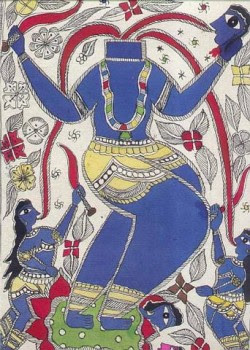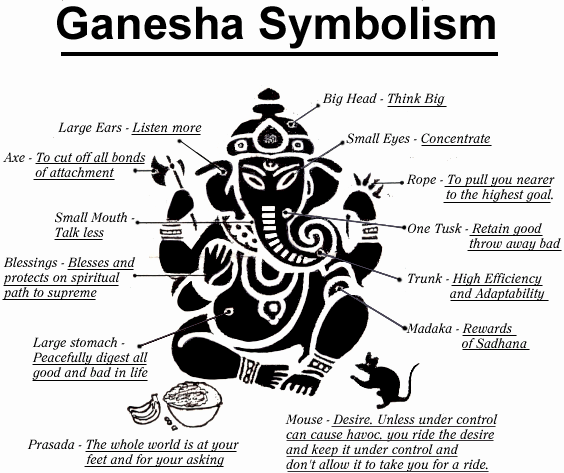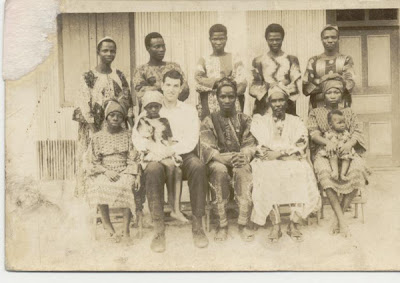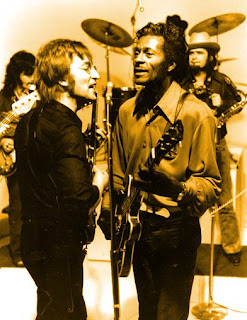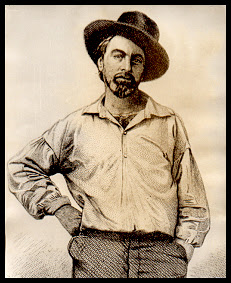 |
| Walt Whitman, 1855 |
Although the method of yoga I practice never uses the term “Tantra,” I’ve long been intrigued by those that do.
Some of my Anusara friends casually refer to themselves as “Tantrikas,” and I love the sound of it: mysterious and exotic, kinda sexy and a more than a little bit edgy.
But the scholar in me always wants to know more: What does this evocative word really mean?
I’ve been thinking about this for awhile, and reading about it on and off. Finally, I’ve come to my own, at least preliminary conclusion, which is that Tantra (speaking strictly as it’s used in the North American yoga community today) has much more to do with Walt Whitman than with Indian tradition.
That’s not to say that there’s absolutely no connection between the two. Whatever linkage there may be between Tantra in its contemporary, North American and traditional, Indian contexts, however, exists more in the realm of the mystical and the poetic than the concrete. That’s OK, though – no, it’s really much more than OK; it’s intriguing, even fascinating. Certainly, it’s where the mystery resides.
That’s probably quite cryptic, if not completely opaque . . . so let me try to explain.
Power and Transgression
Since I was interested in learning about the relationship between Tantra and Hatha yoga (and geeky by nature), reading Geoffrey Samuel's seemed like a good place to start.
Samuel – a British scholar who studies really interesting stuff like “Tibetan yogic health practices” – argues that Tantra can be traced back to a “relatively coherent set of techniques” developed in India during the 9th-10th centuries C.E. During this formative medieval period, its “key elements” included:
Elaborate deity visualizations of fierce male and particularly female deities,
Use of transgressive associated with cremation grounds and polluting substances linked to sex and death, and
“Internal” yogic practices, including sexual techniques, intended to achieve health and long life, as well as liberating insight.
“Tantric ritual,” Samuels explains, “is about powerful and dangerous forces, which must be encountered and dealt with for the good of the community. These forces can only be manipulated by specialist priests and ritualists, and even then there is still a risk that things can ‘go wrong.’” As such, Tantra has always been controversial: Many wondered “whether these practices were legitimate and appropriate, which is perhaps hardly surprising, because their position on or beyond the edge of the legitimate was intrinsic to their power.”
Hmmm. Not sounding that much like “Tantric philosophy of intrinsic goodness” described on the Anusara Yoga website, which naturally makes practitioners “nicer and more considerate” now, is it?
“Liberation is possible in the world”
Certainly, contemporary yoga teachers working with Tantra aren’t trafficking in trangressive techniques involving sex and death, or even (as far as I know) “elaborate deity visualizations.” So what are they doing?
While there’s no simple, single answer to this question, Nora Issacs identifies “non-dualism” as the “one core aspect” of Tantra consistently taught in the West. As explained in her recent Yoga Journal article, this boils down to the belief that “one’s true essence (alternatively known as the transcendental Self, pure awareness, or the Divine) exists in every particle of the universe”:
‘In Tantra, the world is not something to escape from or overcome, but rather, even the mundane or seemingly negative events in day-to-day life are actually beautiful and auspicious,’ says Pure Yoga founder Rod Stryker, a teacher in the Tantric tradition of Sri Vidya. “Rather than looking for samadhi, or liberation from the world, Tantra teaches that liberation is possible in the world.’
In keeping with non-dualism, contemporary Tantra stresses a strongly positive view of the body as a “manifestation of spirit” and potential vehicle for liberation. “’As soon as you like your body, it’s pretty much Tantric,’” Issacs quotes Anusara founder John Friend as saying. “You see the beauty and the Divine in it.’”
So what’s not Tantric?
As someone who’s been around the yoga community for years, this non-dualist, pro-body, this-worldly orientation feels very familiar. So familiar, in fact, that it pretty much describes all the schools of yoga that I’ve ever been exposed to – including ones, such as Iyengar, that claim nothing to do with the “Tantric” label whatsoever.
Yet in a recent EJ interview, John Friend claims that:
Anusara yoga is based on Shiva-Shakti Tantric philosophy, while Iyengar yoga is based essentially on Classical Yoga (Patanjali Yoga Sutra). Tantra focuses on removing the differences between the world and Spirit, while Classical Yoga tries to separate Spirit and the world.
Undoubtedly, as neither an Anusara or Iyengar practitioner (although I have done a reasonable amount of the latter), I’m getting in over my head here (and fear getting slammed by irate commentators). But, really? That doesn’t square with my experience of studying with several certified Iyengar teachers or reading books by Mr. Iyengar himself.
For example, in Iyengar writes that:
If you say you are your body, you are wrong. If you say you are not your body, you are also wrong. The truth is that although the body is born, lives, and dies, you cannot catch a glimpse of the divine except through the body.
I could give many other examples. But the point is: Can you honestly characterize any of the popular forms of yoga today as anti-body? As wanting to separate the body from spirituality? Sure, there’s a lot of “fitness yoga” that’s not interested in the spiritual side of yoga at all. But all other methods seem to have a positive orientation to the body, and to embodying spirituality in the world.
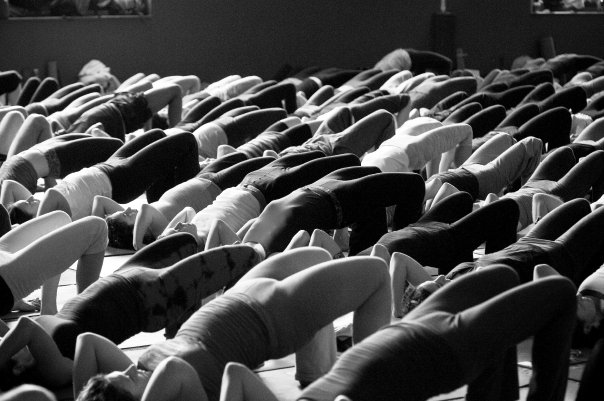 |
| Anusara Yoga class (www.toddboston.com/Blog) |
In other words, it seems to me that all of forms of yoga today (bracketing the purely fitness-oriented ones) are essentially “Tantric,” at least given the YJ definition of the term (which seems to capture the common sensibility of the North American yoga community pretty well). Yet, only particular methods, such as Anusara, describe themselves that way. Either I’m missing something here, or “Tantra” (again, speaking of it only as it’s used in the N.A. yoga community) really means something different.
The Poetry of the Body
So what is it?
It’s tempting to dismiss talk of “Tantra” as simply a marketing gimmick. But I’m not going to. Having taken a teacher training with Shiva Rea several years ago, I’ve drunk some of that (American) Tantric Kool-Aid. There was something identifiably different in that experience, which I at least felt connected to Shiva’s references to Tantra.
Now, I’m only speculating. But based on my experience, what felt identifiably “Tantric” had nothing to do with abstract theories of dualism versus non-dualism. Rather, it was practicing in a way that brought us into what might be described as the “ecstatic realm.” It’s asana worked in a way that catches a ride on a vibrant wave of joy, connection, and liberation – right in this sweat-soaked room, right on this rubber mat, right in the here and now.
I did a little online reading, and found that some of the ancient Tantric texts captured the feeling I had experienced quite well. From the Spanda Karika:
when the Tantrika becomes established in the sacred tremor of reality, he liberates the flow of manifestation and return, and in this way takes pleasure in the universal freedom, as a master of the wheel of energies.
And from the Vijnana Bhairava:
Contemplate over the undivided forms of your own body and those of the entire universe as being of an identical nature. Thus will your omnipresent being and your own form rest in unity and you will reach the very nature of consciousness . . . Feel your substance: bone, flesh and blood, saturated with cosmic essence, and know supreme bliss.
Still, based on what I’ve read about the history of Indian Tantra, I’m strongly inclined to agree with Baba Rampuri’s recent insistence that “Yoga, as practiced in the West, has nothing to do with Tantra as it is practiced in its high and low forms in India.”
The fact that I found some passages in ancient texts that spoke to me, in other words, isn’t enough to convince me that what we refer to as “Tantra” today has much to do with ancient (or even contemporary) Tantric practices in India.
 |
|
Illustration from 1940 edition of Whitman's Leaves of Grass
|
Singing the Body Electric
On the other hand, I think that it has a lot to do with Walt Whitman.
While I’m interested in ancient Tantric texts, I’m even more fascinated by how my experience of ecstatic yoga maps onto his poetry: a man who was, after all, a visionary, mystic, and shaman of my own culture – someone whose energy I still feel resonating (although not nearly as much as I would like) in America today.
From
I celebrate myself, and sing myself,
And what I assume you shall assume,
For every atom belonging to me as good belongs to you.
I loafe and invite my soul,
I lean and loafe at my ease observing a spear of summer grass.
My tongue, every atom of my blood, form’d from this soil, this air,
Born here of parents born here from parents the same, and their parents the same,
I, now thirty-seven years old in perfect health begin,
Hoping to cease not till death.
Creeds and schools in abeyance,
Retiring back a while sufficed at what they are, but never forgotten,
I harbor for good or bad, I permit to speak at every hazard,
Nature without check with original energy.
2
Houses and rooms are full of perfumes, the shelves are crowded with perfumes,
I breathe the fragrance myself and know it and like it,
The distillation would intoxicate me also, but I shall not let it.
The atmosphere is not a perfume, it has no taste of the distillation, it is odorless,
It is for my mouth forever, I am in love with it,
I will go to the bank by the wood and become undisguised and naked,
I am mad for it to be in contact with me.
The smoke of my own breath,
Echoes, ripples, buzz’d whispers, love-root, silk-thread, crotch and vine,
My respiration and inspiration, the beating of my heart, the passing of blood and air through my lungs,
The sniff of green leaves and dry leaves, and of the shore and dark-color’d sea-rocks, and of hay in the barn,
The sound of the belch’d words of my voice loos’d to the eddies of the wind,
A few light kisses, a few embraces, a reaching around of arms,
The play of shine and shade on the trees as the supple boughs wag,
The delight alone or in the rush of the streets, or along the fields and hill-sides,
The feeling of health, the full-noon trill, the song of me rising from bed and meeting the sun.
Have you reckon’d a thousand acres much? have you reckon’d the earth much?
Have you practis’d so long to learn to read?
Have you felt so proud to get at the meaning of poems?
Stop this day and night with me and you shall possess the origin of all poems,
You shall possess the good of the earth and sun, (there are millions of suns left,)
You shall no longer take things at second or third hand, nor look through the eyes of the dead, nor feed on the spectres in books,
You shall not look through my eyes either, nor take things from me,
You shall listen to all sides and filter them from your self.
American Tantra? I, for one, say “yes.”
